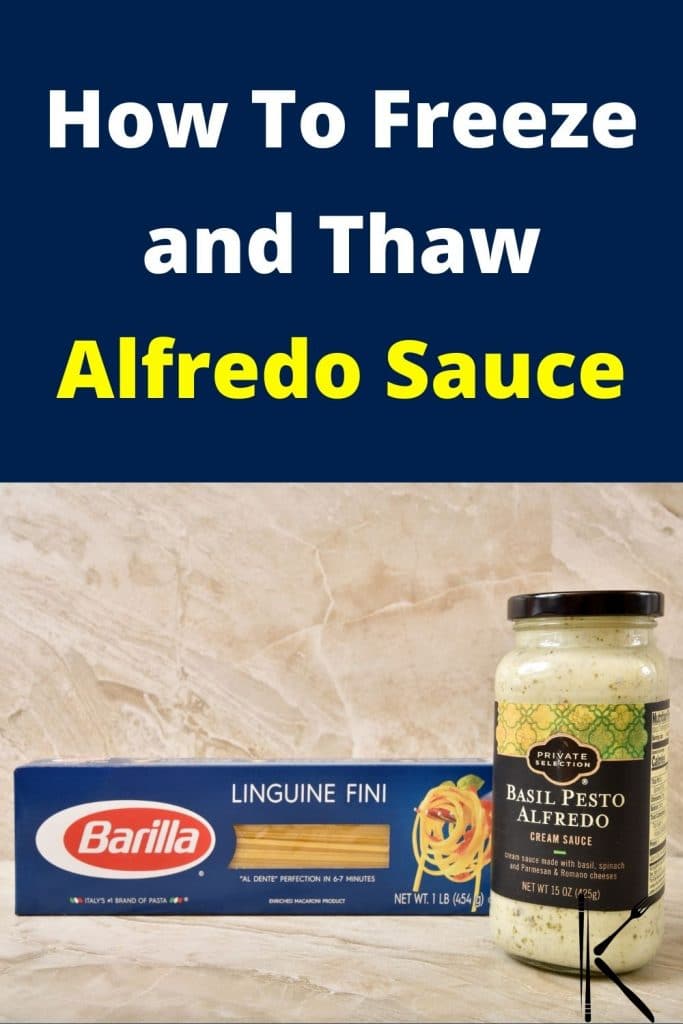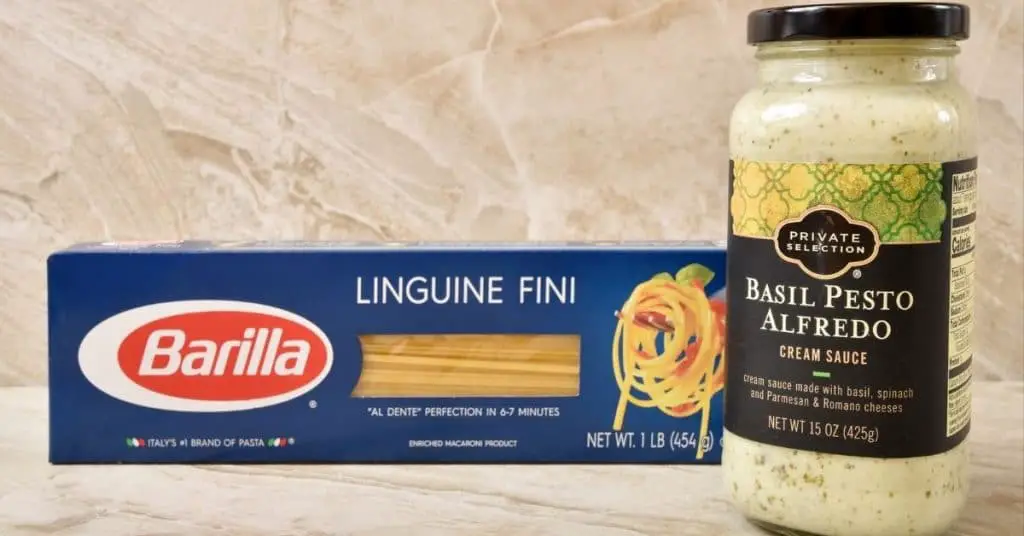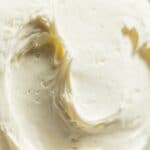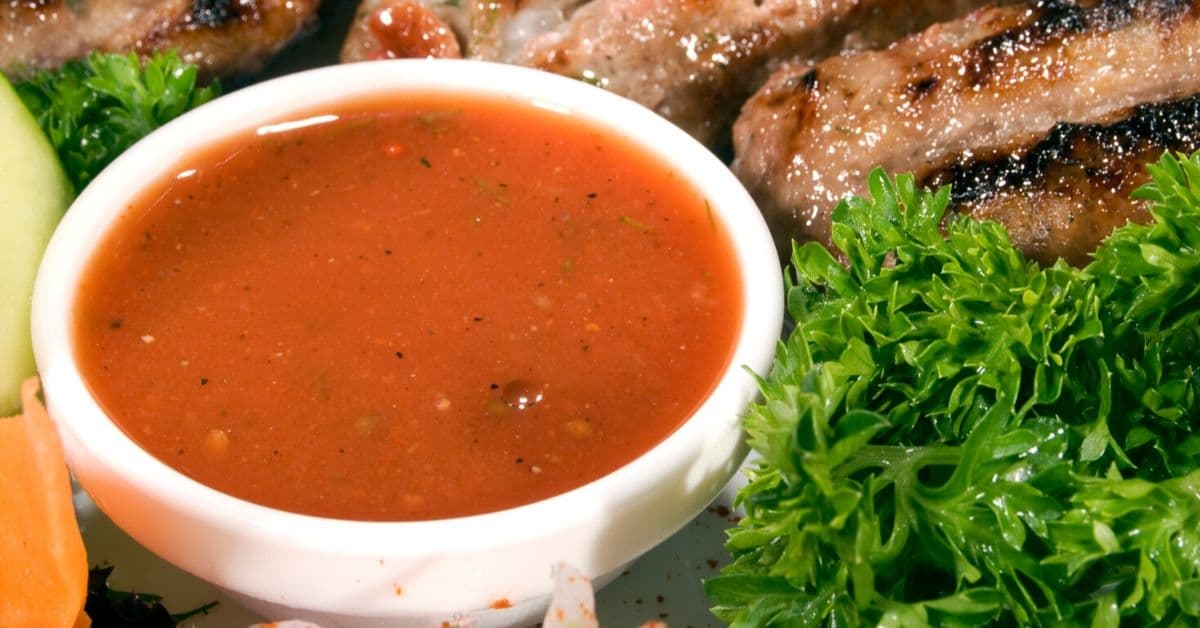In short, yes, you can freeze Alfredo sauce, but be aware that the texture and appearance may change. However, it can still be used in cooked dishes after thawing by mixing well to restore the creamy consistency.
Rich, creamy, and cheesy, Alfredo sauce is the perfect addition to a hearty pasta meal. With its high dairy content (and fat content), Alfredo sauce does not have a long shelf life which means that any extra sauce can easily go to waste if not used within a few days.
Cream or dairy-based sauce does not usually get a good wrap when it comes to freezing due to the textural changes that occur on thawing. There is, however, a way to preserve Alfredo sauce in the freezer for future use.
This way you don’t have to see any of your creamy pasta sauce perfection go to waste. If you have too much Alfredo sauce, save money and freeze it to enjoy one, two, or even 3 months later.
Below you will find out everything you need to know about freezing Alfredo sauce for later use.
Can Alfredo Sauce Be Frozen?
You can freeze Alfredo sauce, although textural changes will occur due to containing dairy products as well its high water content. The temperature changes and damage to cell walls during the freezing process will cause the ingredients to split and the sauce may take on a yellowish hue.
Despite these changes, leftover Alfredo sauce can be successfully used in cooked dishes after freezing by simply mixing the ingredients well after defrosting to reconstitute the creamy consistency.
Follow the steps below carefully to freeze and thaw this cream-based sauce for successful long-term preservation.
How To Freeze Alfredo Sauce
Step 1: Cool
Traditional Alfredo sauce should be frozen straight after the sauce is made as this will lessen the chances of the ingredients splitting. Once the sauce has been prepared, cool it completely to room temperature. You can place it in the refrigerator for faster cooling.
Step 2: Portion and Pack
Once cooled, portion the Alfredo sauce into the quantities you may need at any given time. This prevents having to thaw a large batch as you will not be able to refreeze any leftovers a second time around.
Pour or scoop the sauce into thick resealable freezer bags. Leave some headspace for the sauce to expand as it freezes.
Step 3: Remove Air
Air is the enemy and will cause freezer burn which further ruins the texture and flavor. before you freeze the sauce it is therefore important to remove as much air as possible from the freezer bag.
Step 4: Label and Freeze
Once the air is removed and the freezer safe bag is sealed, label it. Include the freezing date on the label in order to keep track of how long the sauce has been stored.
Place the sauce-filled packets flat on a baking sheet and pop it into the freezer. Packing it in thin layers allows the sauce to freeze and thaw evenly. Once frozen, remove the baking sheet and stack the packets in the freezer allowing you to save plenty of space and keep the freezer organized.
How To Defrost Frozen Alfredo Sauce
The best way to thaw Alfredo sauce, is to remove the frozen sauce from the freezer and place it in the fridge to thaw overnight. You will notice that the frozen Alfredo sauce will separate as it thaws. Snip the corner of the freezer bag and squeeze the sauce out into a sauce pan.
Mix it well with a whisk or wooden spoon to reconstitute all the ingredients to their creamy consistency. Heat the sauce slowly. If it has thinned out too much on freezing, mix a half teaspoon of cornstarch in a small quantity of cold water to form a paste.
Add the paste into the sauce and give it a good stir. Simmer the mixture on the stovetop until it thickens to the desired consistency. Enjoy the creamy goodness with vegetables, meat or in a pasta dish.
Once heated, use all the sauce. Cooling and heating it again will increase the chances of harmful bacterial growth and food poisoning.
Types of Alfredo Sauce
Authentic homemade Alfredo sauce is a creamy sauce made from butter, Parmesan cheese, and often with the addition of cream.
The sauce is known as a pasta coating, especially with chicken Alfredo, but can be creatively used in other dishes such as vegetable casseroles, turkey or chicken bake, and a baked potato topping.
Alfredo sauce variations can include the addition of various cheeses, cream cheese, and herbs. A variety of commercially-produced Alfredo sauces can be purchased in a jar, however, these types include flavorings, additives, and stabilizers to extend their shelf-life.
FAQs
Conclusion
Alfredo sauce makes pasta an indulgent dinner affair, but it is not always possible to just make the quantity you are going to use.
Leftover sauce is sometimes inevitable. As long as you freeze Alfredo sauce shortly after it has been made, you can enjoy it in a variety of savory dishes for months to come.
Don’t worry about the change in texture and color when you defrost Alfredo sauce. You can easily fix this on reheating and when incorporating it into your next delicious vegetable or meaty meal.
As you start to reheat the sauce, you can even add a bit more cheese for a completely comforting and decadent meal or top with a sprinkle of parmesan cheese.
Up next: How To Reheat Fettuccine Alfredo

Image by depositphotos.com/MSPhotographic









